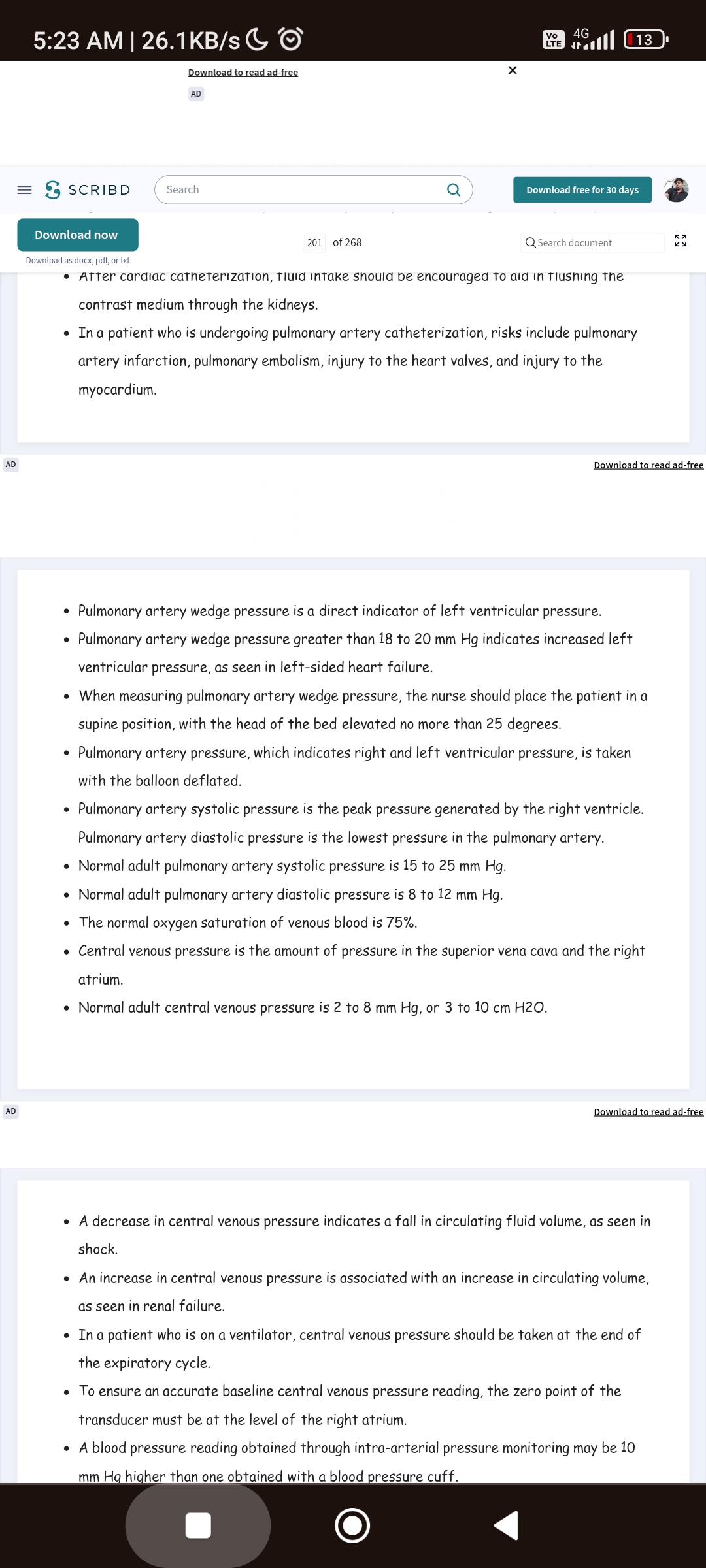What is the significance of pulmonary artery wedge pressure and central venous pressure in assessing cardiac function?

Understand the Problem
The question is likely addressing various aspects of cardiac and vascular physiology, focusing on measurements such as pulmonary artery wedge pressure and central venous pressure, their implications, and techniques for accurate assessment.
Answer
PAWP assesses left ventricular function; CVP evaluates right ventricular function and blood volume.
Pulmonary artery wedge pressure (PAWP) is used to assess left ventricular function and diagnose conditions such as heart failure. Central venous pressure (CVP) helps evaluate right ventricular function and blood volume status. Both are critical for guiding treatment and monitoring cardiac health.
Answer for screen readers
Pulmonary artery wedge pressure (PAWP) is used to assess left ventricular function and diagnose conditions such as heart failure. Central venous pressure (CVP) helps evaluate right ventricular function and blood volume status. Both are critical for guiding treatment and monitoring cardiac health.
More Information
PAWP is essential in diagnosing and managing left-sided heart conditions, while CVP provides insights into central venous system status, crucial for managing fluid therapy.
Tips
Common mistakes include misinterpreting values without considering clinical context, which can lead to incorrect diagnosis or treatment plans.
Sources
- Pulmonary Artery Wedge Pressure and Central Venous Pressure - ncbi.nlm.nih.gov
- Central Venous Pressure and Pulmonary Artery Wedge Pressure - openanesthesia.org
AI-generated content may contain errors. Please verify critical information